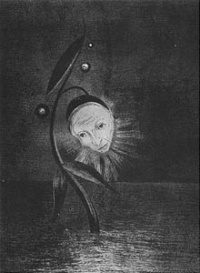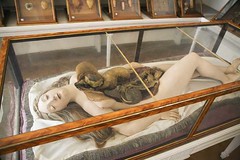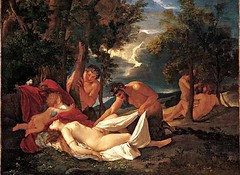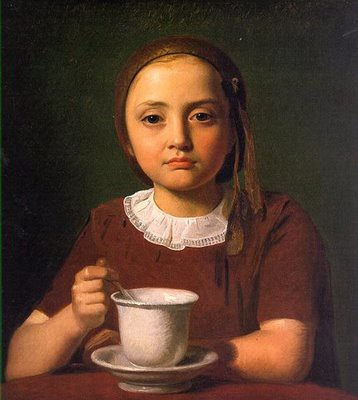La Fleur du marécage (1885) by Odilon Redon
In 1885, Odilon Redon depicts a Pierrot entitled La Fleur du marécage and commented with “La fleur du marécage, une tête. humaine et triste.” The engraving is is reminiscent of the fantastic plants of Edward Lear. Marécage is French for swamp, so the title translates as The flower of the swamp, a head. Human and sad.



































































































































